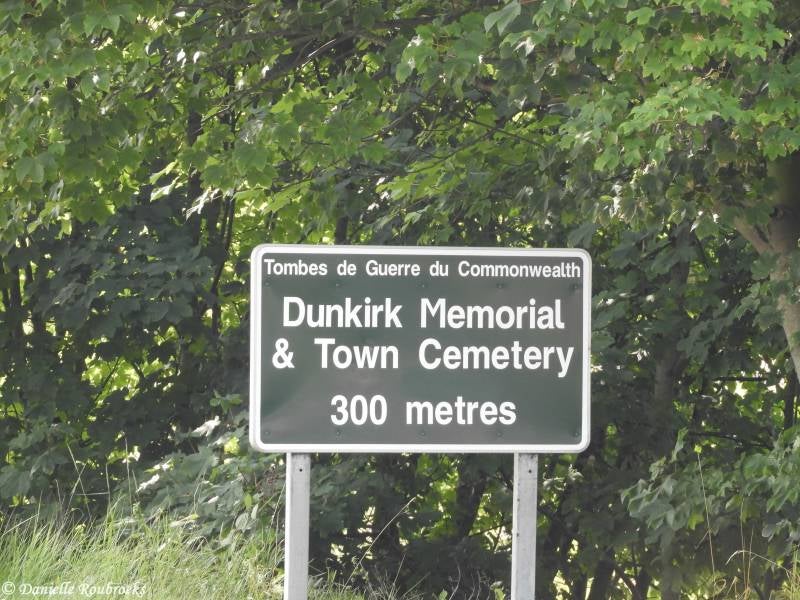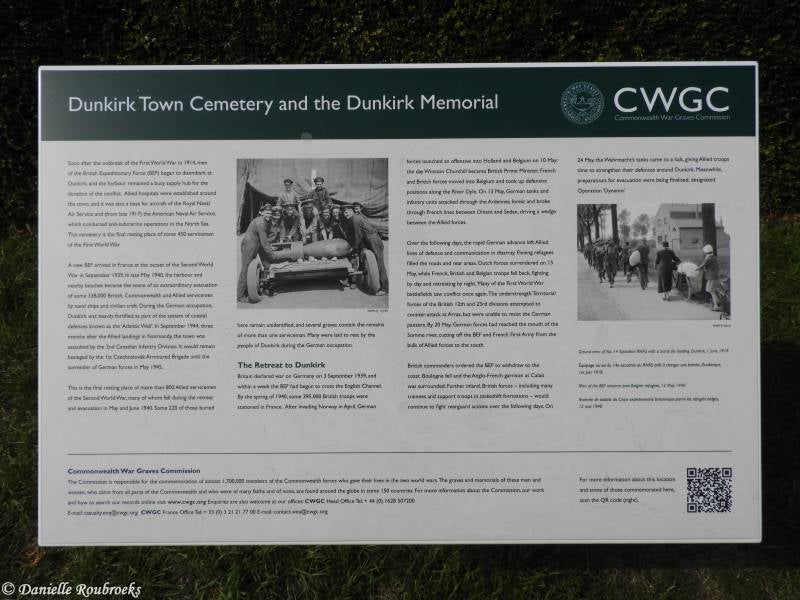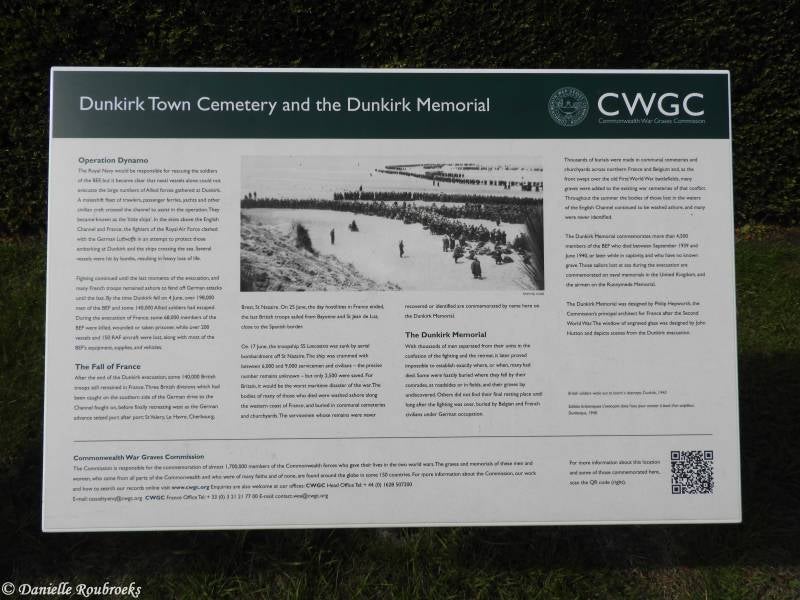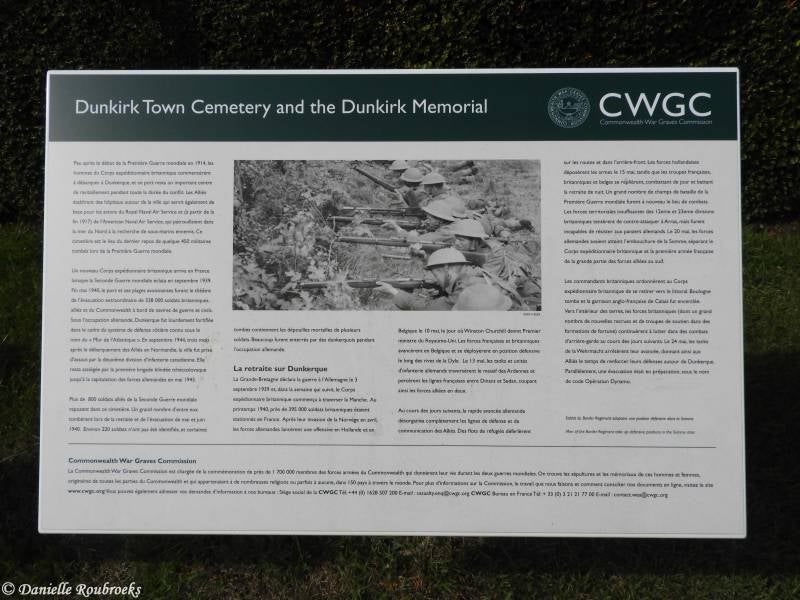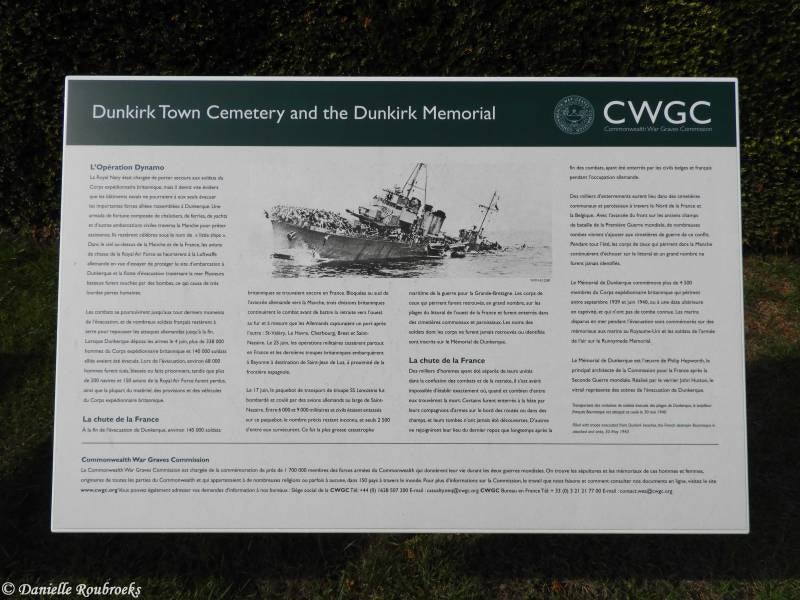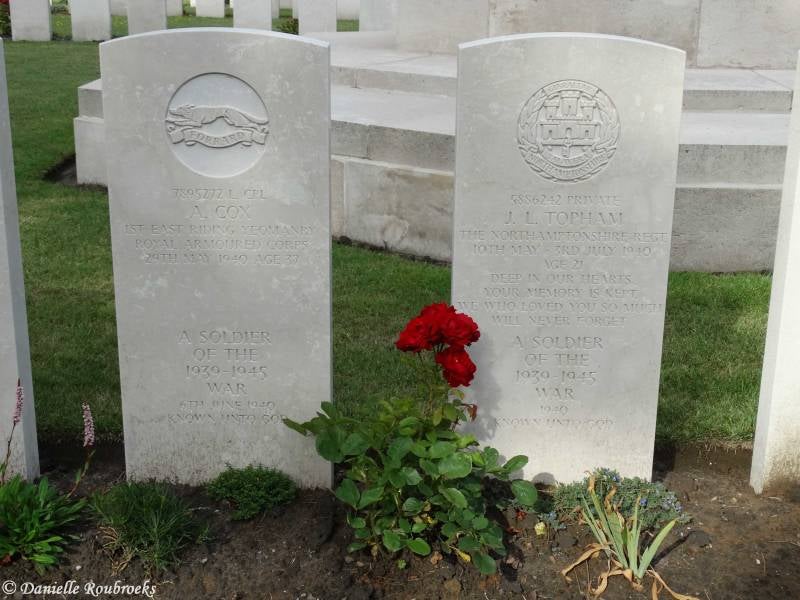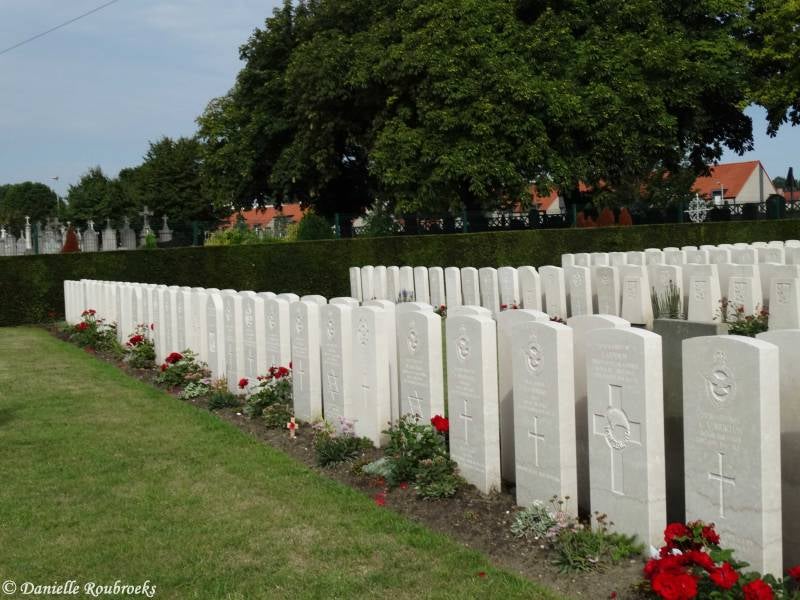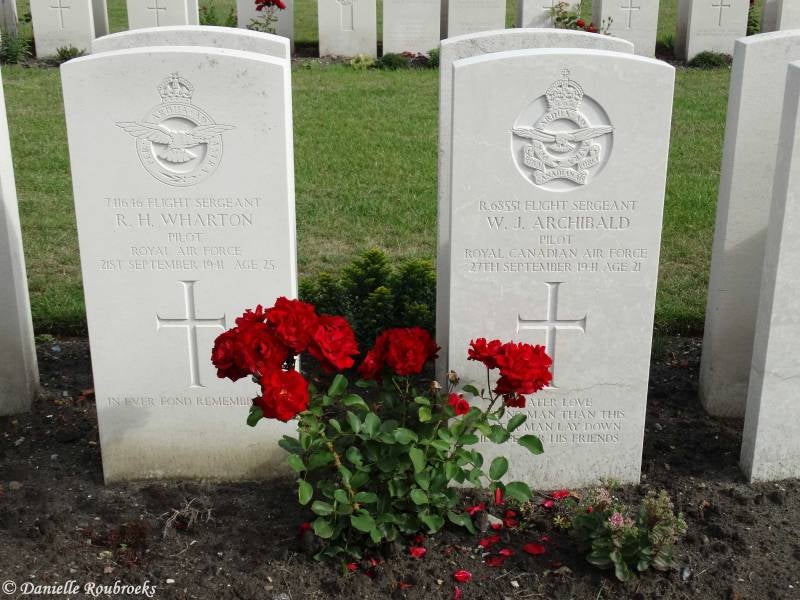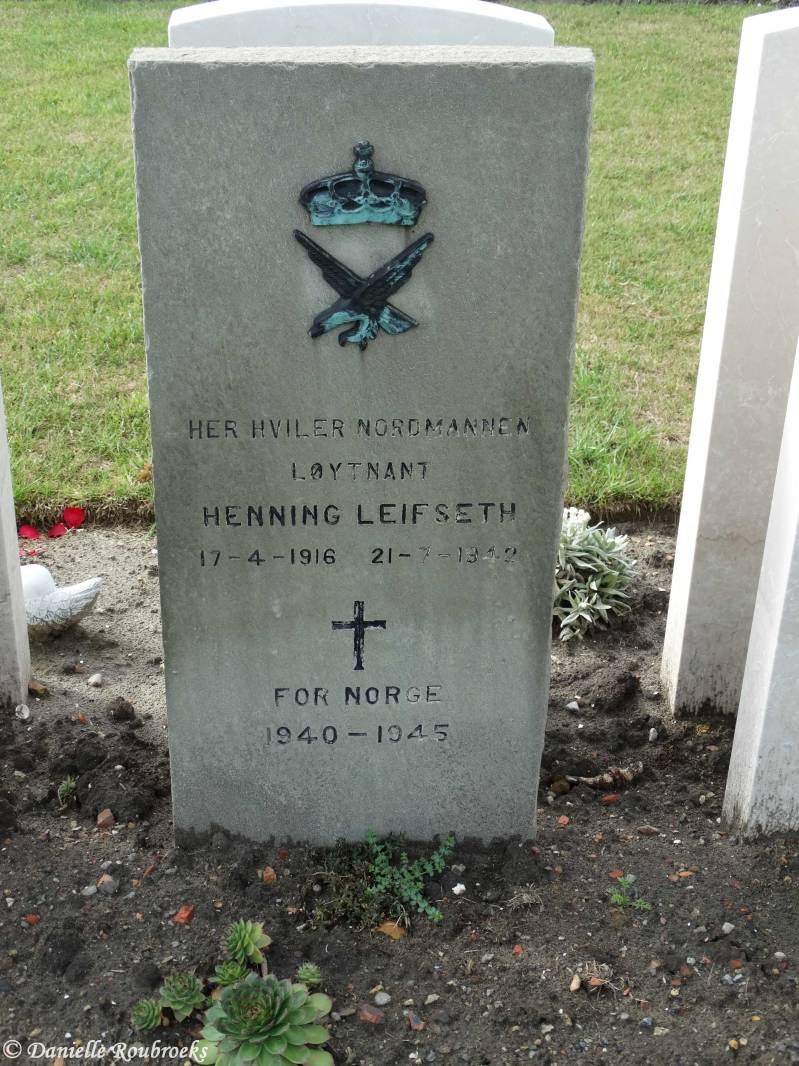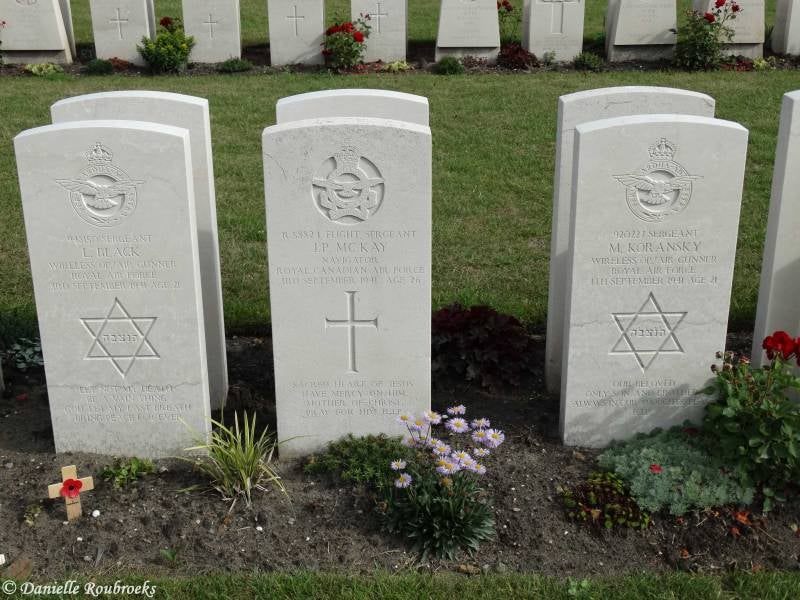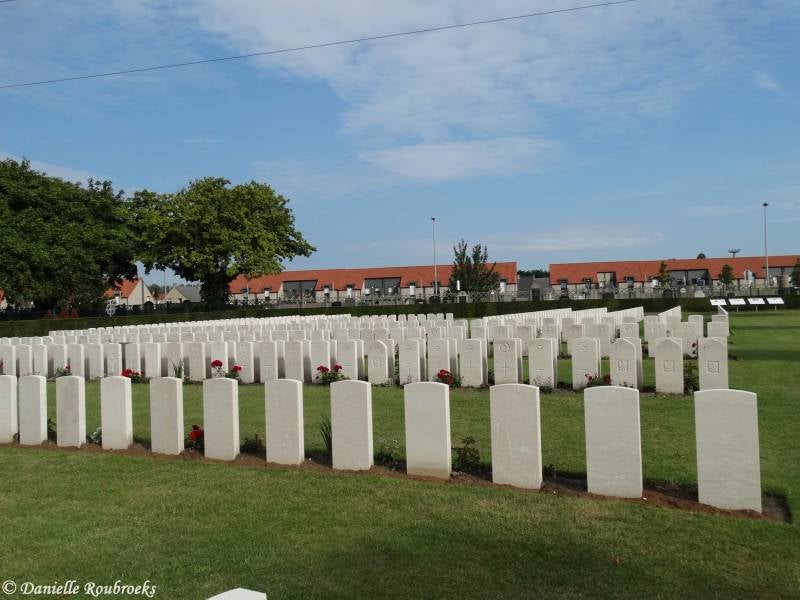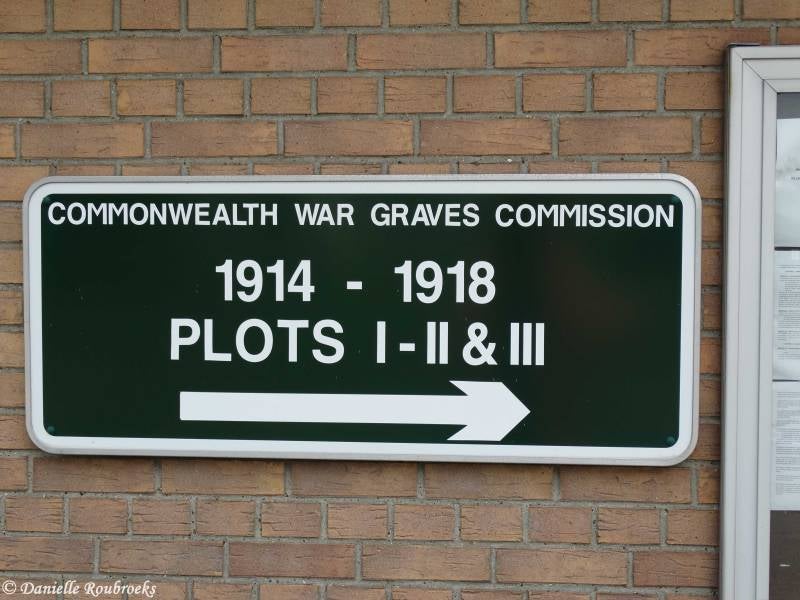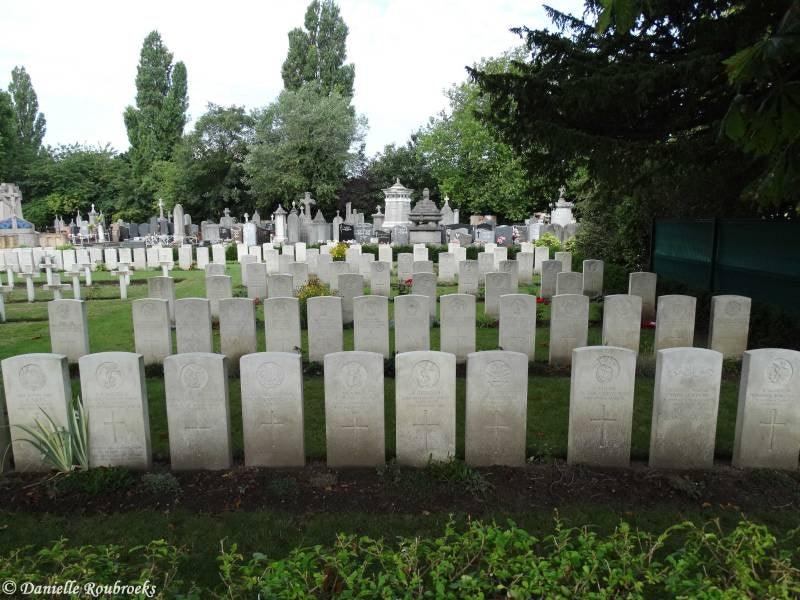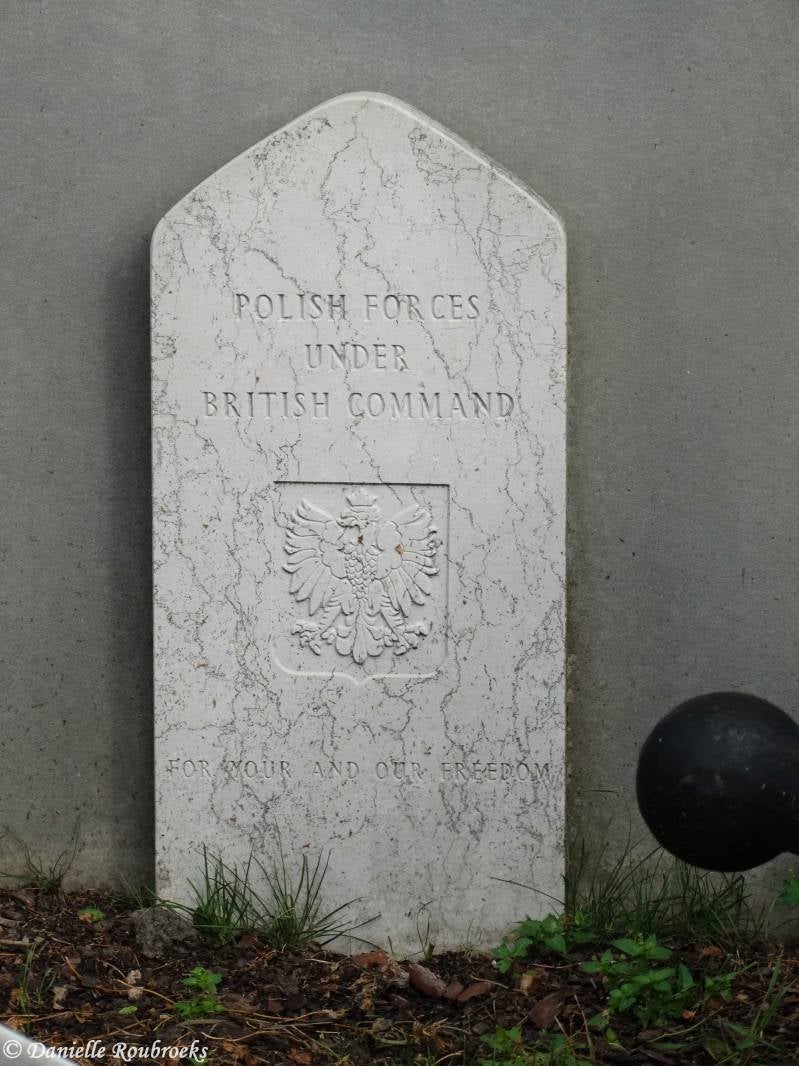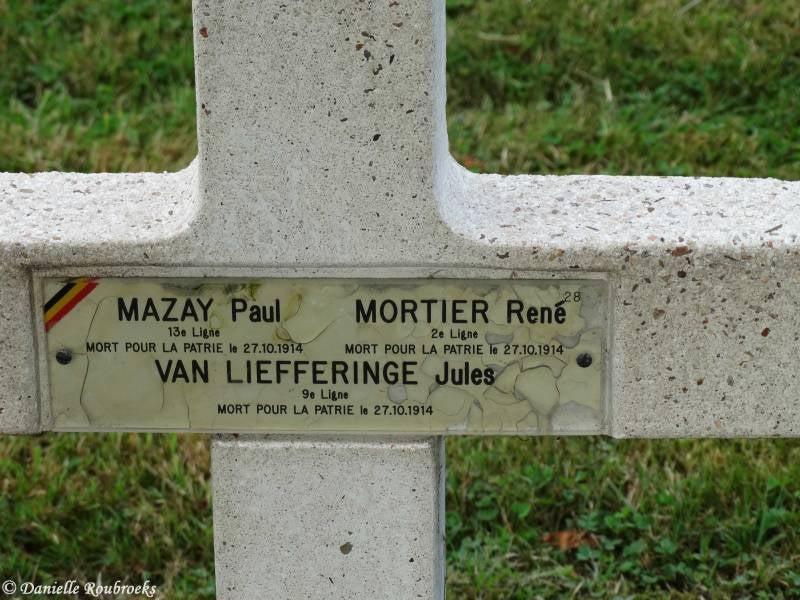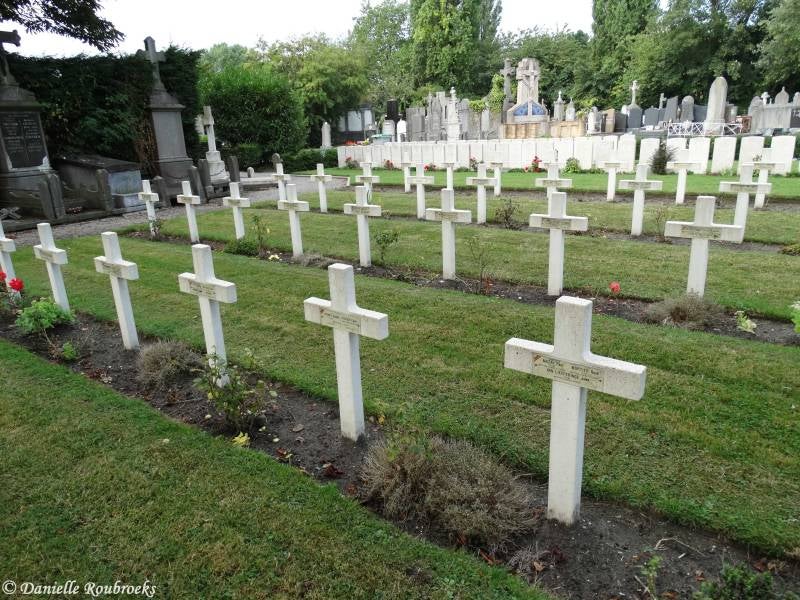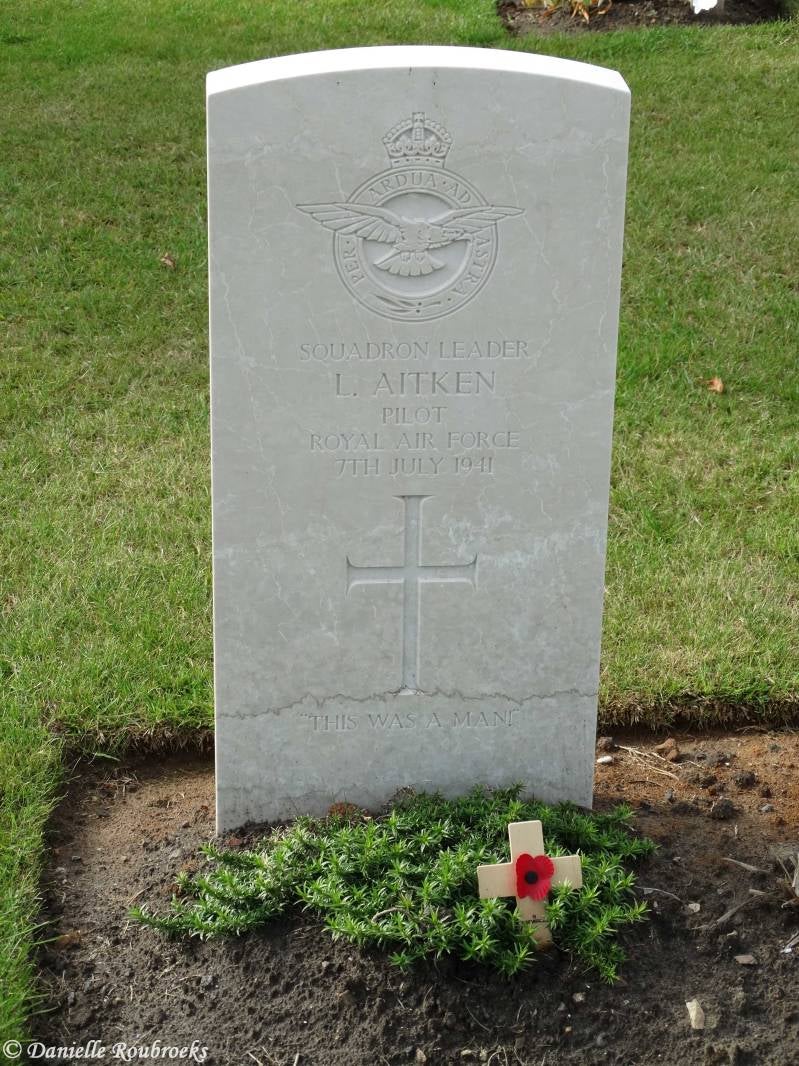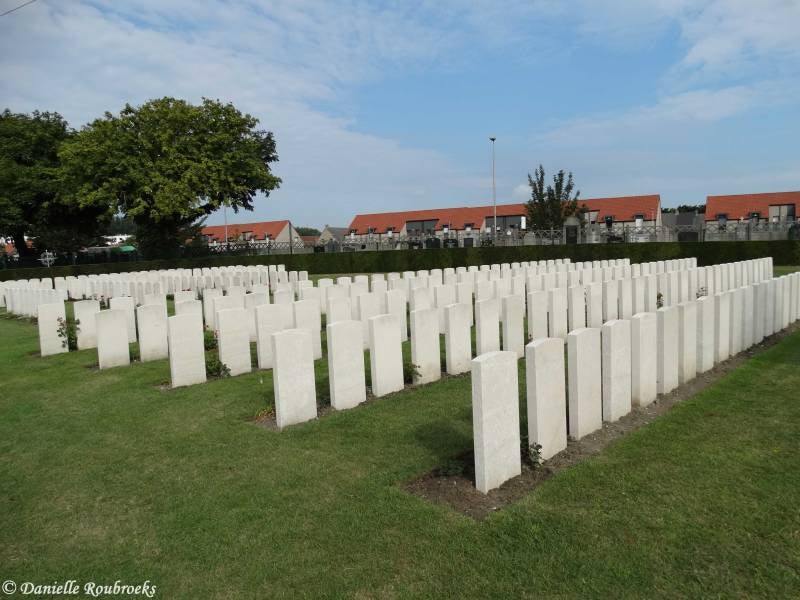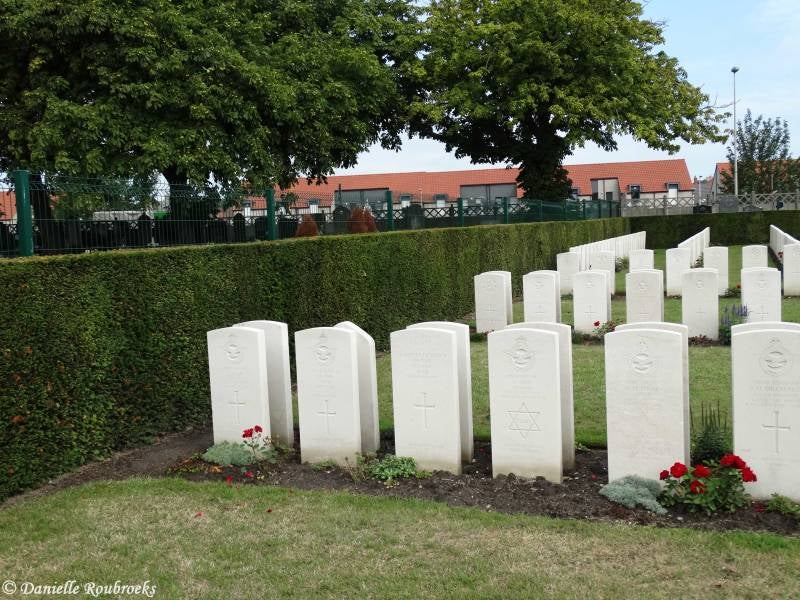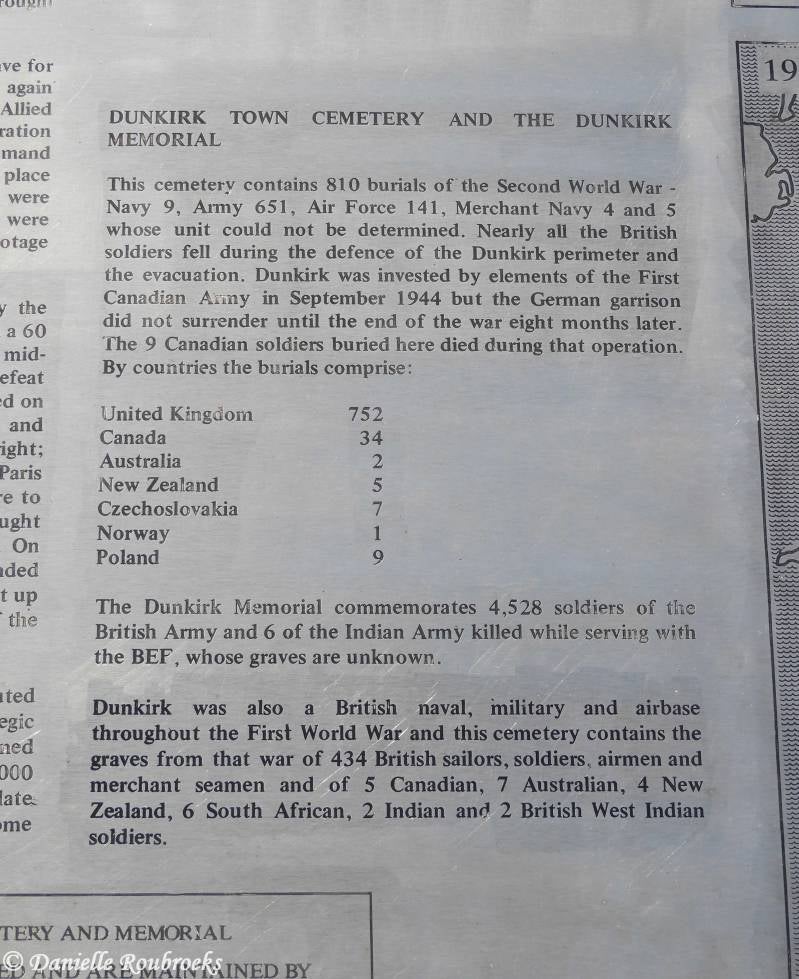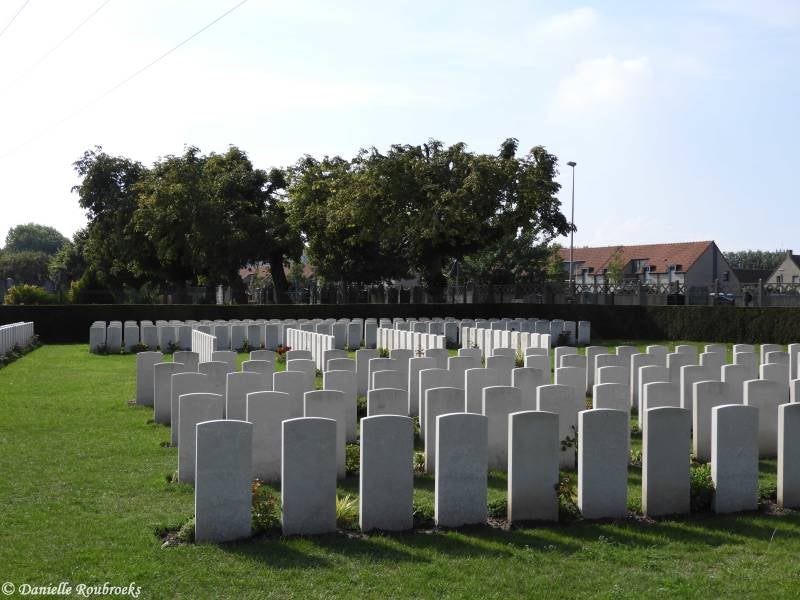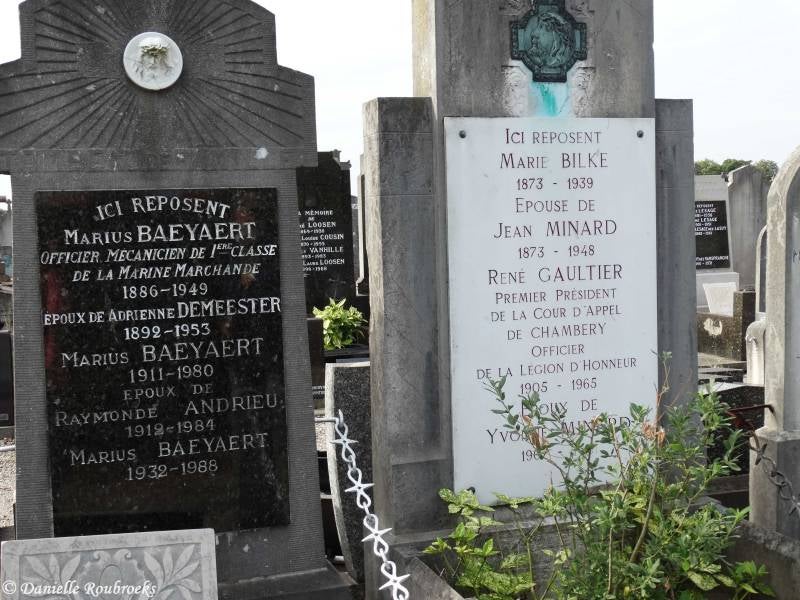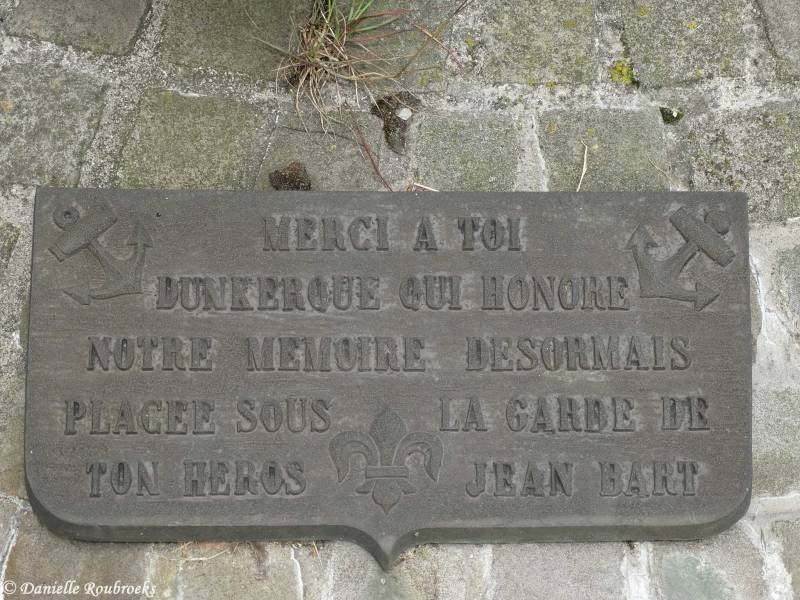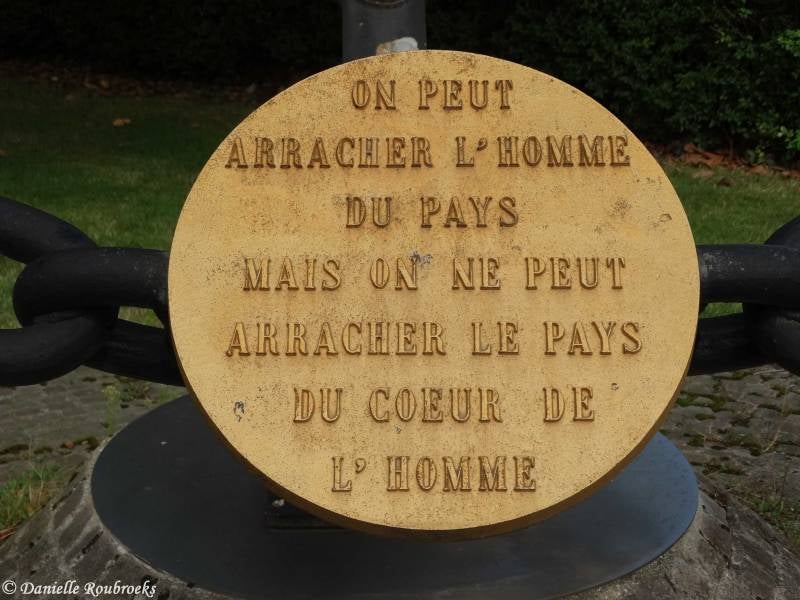Dunkirk Town Cemetery
Historical Information (Source: CWGC)
Dunkirk witnessed the landing of the British Expeditionary Force in September and October 1914. Throughout the First World War it was a seaplane base and later an American Naval Air Service base. The town was also a French hospital centre and the 8th Canadian Stationary Hospital was there from November 1918 to April 1919. Although an estimated 7,500 shells and bombs fell on the town during the war, ship building and other port activities continued. During the Second World War, Dunkirk was the scene of the historic evacuation of the British Expeditionary Force from France in May 1940.
DUNKIRK TOWN CEMETERY contains 460 Commonwealth burials of the First World War, ten of them unidentified. The graves are situated in Plots 1 to 3 in the public part of the cemetery to the right of the main entrance, and in Plots 4 and 5 of the Commonwealth War Graves section adjacent to the Dunkirk Memorial. Of the 793 Second World War burials, 213 are unidentified and special memorials are erected to 58 soldiers known to be buried among them. These graves are in Plots 1 and 2 of the section by the Dunkirk Memorial. There are also Czech, Norwegian and Polish war graves within the Commonwealth section, and war graves of other nationalities will be found elsewhere within the cemetery.
Served with
- United Kingdom (967)
- Canadian (39)
- Australian (9)
- New Zealand (9)
- Polish (9)
- South African (6)
- Indian (2)
- Norwegian (1)
Served in
- Army (708)
- Air Force (183)
- Navy (138)
- Merchant Navy (10)
- Miscellaneous (3)


